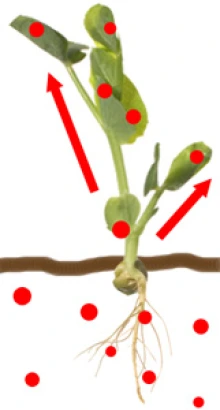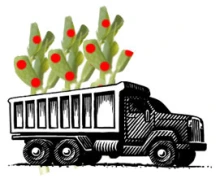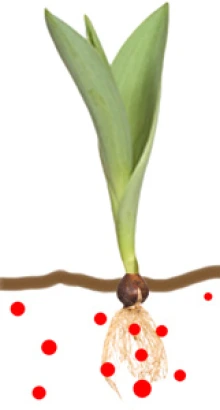Phytoremediation: using plants to treat environmental pollution
The term phytoremediation comes from the Ancient Greek word phyto meaning “plant” and the Latin word remedium meaning “restoring balance.” It is a technology that uses plants to treat environmental pollution problems. Plants are used either to remove or to stabilize (hold in place) pollution in the soil.
The ultimate goal is to use plants to reduce the risk of human exposure.
Compared to other methods used to remove toxic substances from soils, phytoremediation is often less expensive, although it may take a long time. Another benefit is that it covers the site with an attractive layer of plants that prevents wind and water from carrying the pollution to other places.
Two common strategies for phytoremediaton are: Phytoextraction and Phytostabilization
Plant selection: critical for success
Picking the right plant for the job is important! Some factors to consider are:
Plant Accumulation: When plants take up water through their roots in polluted soils, they can also take up toxic substances. In this way, plants can accumulate (store) pollutants in roots, stems, and/or leaves. Some plants are very good at this, while other plants accumulate very little. Scientists can test plants and calculate an “accumulation factor” (AF) = (pollution taken up into plant) divided by (pollution in soil).
- A plant with a high AF takes up pollution into above-ground parts of the plant, and is good for phytoextraction.
- A plant with a low AF does not take up much pollution, and is good for phytostabilization.
Use of Native Plants: There are several advantages to using native plants for phytoremediation:
- Maintains local heritage of plants
- Restores biodiversity (variety of natural plant and animal life) to a damaged area
- Requires less maintainance, as plants are already adapted to the environment
Variety of Plants: Selection of a variety of plant types (grasses, shrubs, and trees) helps to improve coverage of the area and develop a more robust ecosystem.

What is Phytoextraction?
The goal of phytoextraction is to use plants to remove metal pollutants from the soil.
- Plant types are selected for high accumulation of metals.
- As plants grow, they collect and store metals in stems and/or leaves.
- Pollutant-rich plants are then harvested.
- These plants can be disposed of as hazardous waste. Alternatively, they can be burned for energy, which allows metals to be recovered and recycled.

Phytoextraction is a good option if pollution is moving and spreading in the soil or water beneath the ground and the only way to stop it is to remove it. It is also a good option for smaller land areas, or if a polluted site is located on a valuable area of land.
Phytoextraction requires long-term maintenance and routine harvesting of the plants, as well as safe disposal of polluted plant materials. Phytoextraction does not work for lead, but can be effective for arsenic, cadmium, and nickel.

What is Phytostabilization?
Phytostabilization The goal of phytostabilization is to stabilize metal or organic pollution in the soil with a lasting cover of plants.
- Plant types are selected for low accumulation of a pollutant.
- As plants grow, they change and stabilize the soil, which helps prevent wind and water transport of soil and pollutants.
- Eventually, a layer of plants can keep growing without help.

Phytostabilization is a good option when pollution is not moving underground, but might be spreading in the air. It is also a good option for large land areas in which there is too much polluted soil to be removed. In addition, wildlife can safely eat the plants, due to low accumulation of pollutants.
Phytostabilization requires the growth of a healthy and strong layer of plants before human activity can resume on the land being treated.
Types of Phytoremediation
The method of phytoremediation used depends on the type and amount of pollution, as well as what type of area it is found in.
- Phytoextraction: plants take up metal pollutants and are then harvested for disposal
- Phytostabilization: plants stabilize metal or organic (carbon-containing) pollutants in the soil near their roots
- Phytodegradation: organic pollutants are changed into something less toxic or non-toxic, either by the plant itself, or by reactions caused by bacteria in the root zone of the plant
- Phytovolatilization: plants take up metal or organic pollutants and change them to gas that is released into the air
Establishing healthy soil: When soil is highly polluted, it can be hard for any plants to grow. The site may require special preparation first, to establish healthy soil. Additions such as compost, manure, fertilizers, limestone, gypsum, and/or irrigation may be required for plants to grow.
How long will cleanup take?
This depends on factors that are different at every site: what kind of pollution is present, and how much there is, which phytoremediation method is chosen, and what type of plants are used.
Want to learn more about Phytoremediation?
For more information, please contact us at:
October 2012 / Authors: Corin Hammond, Dr. Sarah Wilkinson / Expert Reviewers: Dr. Rufus Chaney (USDA), Dr. Raina Maier

